10 Forgotten Avatars of Lord Shiva—The Fearless Adventure
Ankit Gupta | May 02, 2025, 18:19 IST
( Image credit : Timeslife )
Lord Shiva, the embodiment of cosmic transformation and divine mystery, is often revered through his well-known forms like Nataraja, Mahadeva, and Rudra. However, Hindu scriptures and oral traditions also speak of several lesser-known avatars of Shiva—each carrying profound symbolic meanings, cosmic purposes, and spiritual teachings. These rare incarnations remind us that Shiva is not just the destroyer in the Trimurti, but also a teacher, protector, and cosmic regulator who descends in various forms to guide, test, and elevate beings across time and space.
Lord Shiva, the embodiment of cosmic transformation and divine mystery, is often revered through his well-known forms like Nataraja, Mahadeva, and Rudra. However, Hindu scriptures and oral traditions also speak of several lesser-known avatars of Shiva—each carrying profound symbolic meanings, cosmic purposes, and spiritual teachings. These rare incarnations remind us that Shiva is not just the destroyer in the Trimurti, but also a teacher, protector, and cosmic regulator who descends in various forms to guide, test, and elevate beings across time and space.

The Piplaad Avatar of Lord Shiva was born to relieve the cosmic affliction caused by Shani (Saturn). According to ancient texts, Piplaad was born under a bad planetary alignment that indicated early death. However, he performed deep penance and invoked Shiva's grace, eventually gaining spiritual strength to confront Shani himself.
In a divine exchange, Piplaad forgave Shani but requested that those who worship him with devotion should be freed from Shani's malefic effects. This avatar is particularly venerated in parts of Maharashtra and Gujarat.
Piplaad represents the triumph of faith and penance over fate and planetary influences. He is also invoked in Vedic astrology rituals to reduce the impact of Shani dosha.
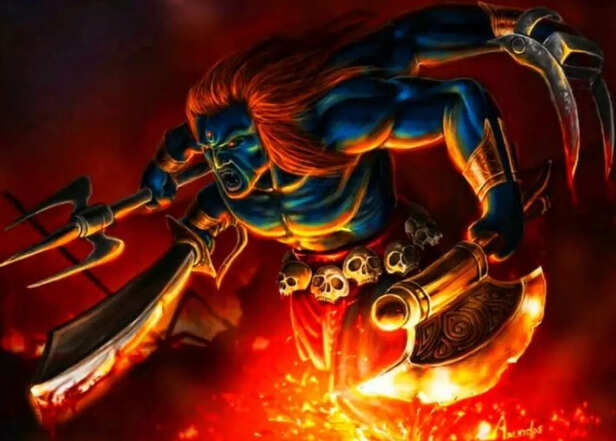
Veerabhadra is one of the most intense and destructive forms of Shiva, created from his third eye in a moment of cosmic rage. This form emerged when Goddess Sati immolated herself at her father Daksha's yajna, where Shiva had been insulted and uninvited. Veerabhadra descended upon the yajna with a ferocious army, destroying everything in his path and ultimately beheading Daksha.
Veerabhadra symbolizes righteous anger, divine justice, and the fiery energy required to destroy adharma (unrighteousness). He teaches that even divinity has a limit to tolerance when dharma is violated.
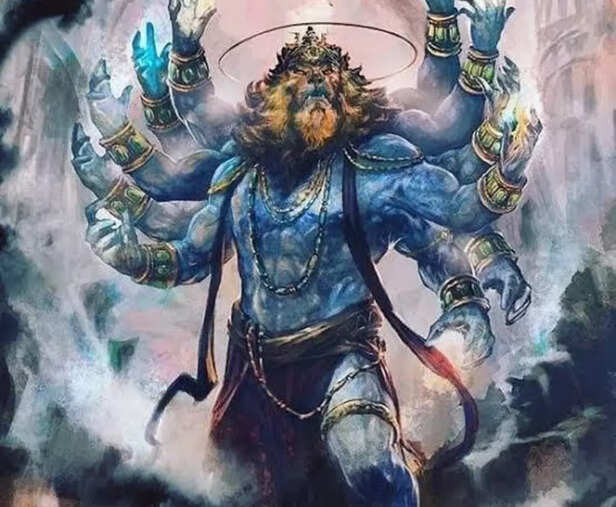
After Lord Vishnu took the fierce form of Narasimha to kill the demon Hiranyakashipu, he became so wrathful that none could calm him. To restore cosmic balance, Shiva manifested as Sharabha, a half-lion and half-bird form even more powerful than Narasimha.
Sharabha enveloped Narasimha in a hug, calming him down and restoring order.
Sharabha teaches that even divine wrath must be regulated. It is a reminder that cosmic order requires cooperation and mutual restraint among the gods themselves.
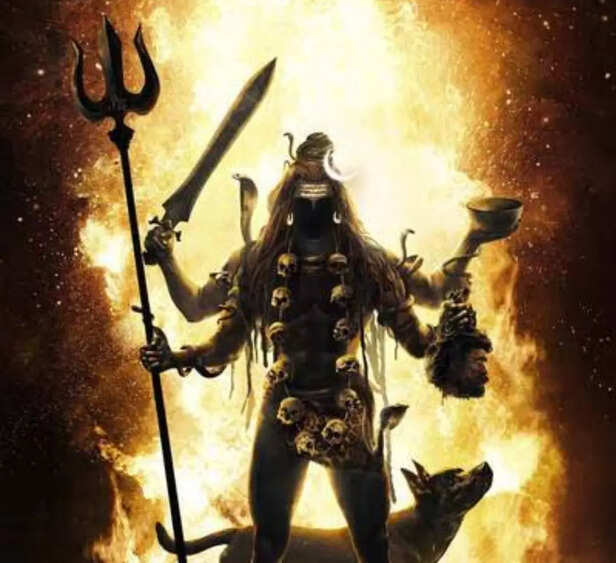
Bhairava, particularly in his form as Kalabhairava, is a terrifying yet protective manifestation of Shiva. Born from Shiva's wrath when Brahma lied about reaching the top of the cosmic pillar of fire, Bhairava cut off one of Brahma's heads, thereby punishing ego and falsehood.
He later became the guardian of temples and sacred spaces, especially in Kashi.
Bhairava is the guardian of time (Kala) and teaches us to respect truth, humility, and the spiritual sanctity of space. He is invoked for protection from fear and negativity.
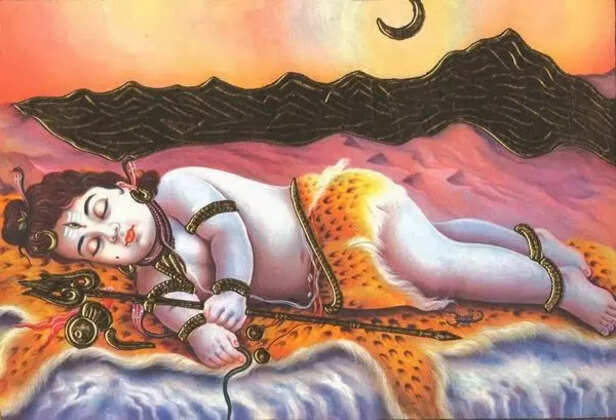
In this form, Shiva incarnated as Grihapati, born to a devout Brahmin couple. When Grihapati faced death due to planetary doshas, he undertook severe austerities and eventually invoked Shiva's power.
Shiva then appeared before him and blessed him, not only removing his doshas but also making him a symbol of household dharma and spiritual discipline.
Grihapati represents the harmonization of material duties and spiritual life. He shows that even householders can attain divine grace through sincere devotion.
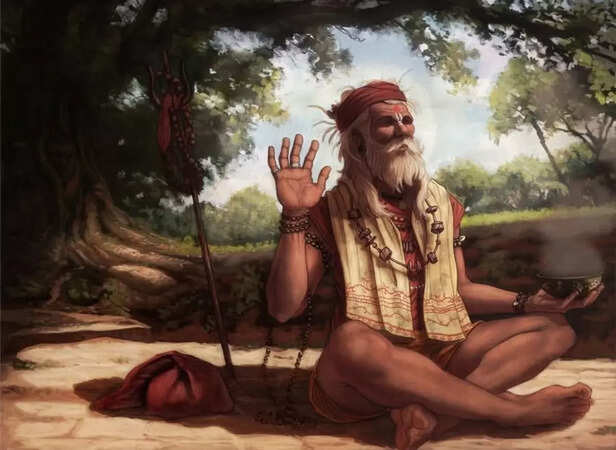
Once, a rich and pious merchant grew arrogant about his devotion. To test him, Shiva took the form of a humble ascetic named Yatinath and arrived at the merchant's home. The merchant insulted Yatinath and turned him away.
Shortly after, the merchant lost all his wealth. Realizing his mistake, he repented and was ultimately forgiven.
Yatinath reminds us that humility and compassion matter more than outer rituals. Divine tests often come in the most unexpected forms.
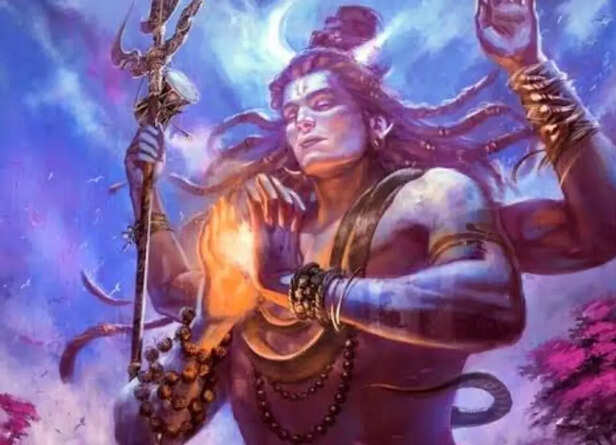
Aghora is not just an avatar but one of the five fundamental faces (Panchamukhas) of Shiva. Associated with cremation grounds, intense austerity, and transcendence, Aghora represents dissolution of ego and complete surrender.
He is worshipped in Tantric and Aghori traditions as the embodiment of non-dual awareness that sees no distinction between pure and impure.
Aghora is the teacher of detachment, fearlessness, and spiritual transcendence. He encourages practitioners to go beyond societal norms to realize the truth.
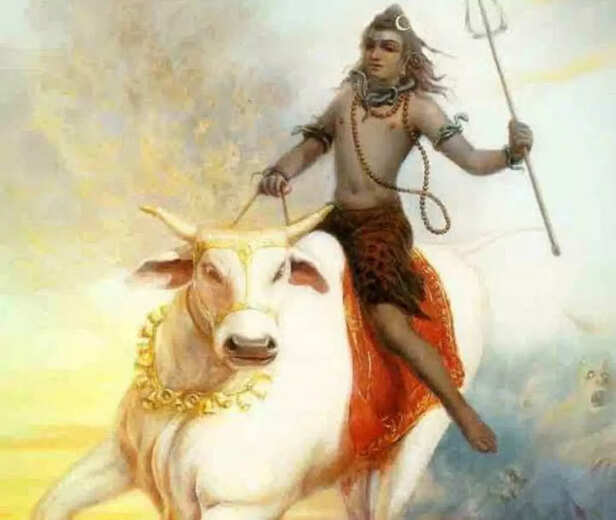
In the Rishabh Avatar, Shiva took the form of a sage to guide humanity on the path of vairagya (detachment) and dharma. He taught principles of simplicity, asceticism, and the inner path to liberation.
Some traditions even associate him with the Jain Tirthankara Rishabhdev, symbolizing Shiva's all-pervading guidance.
Rishabh represents the ultimate renunciate who shows that self-realization lies beyond material pursuits.
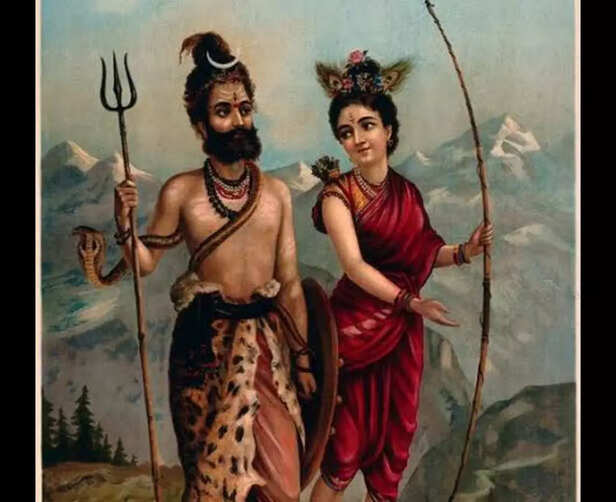
The Kirat Avatar is described in the Mahabharata, where Shiva takes the form of a wild hunter to test Arjuna. As Arjuna meditated to obtain divine weapons, Shiva in his Kirat form challenged him in battle.
After a fierce duel, Shiva revealed his identity and granted Arjuna the powerful Pashupatastra.
Kirat symbolizes divine testing before empowerment. It reminds us that inner strength, humility, and focus are prerequisites for receiving divine blessings.
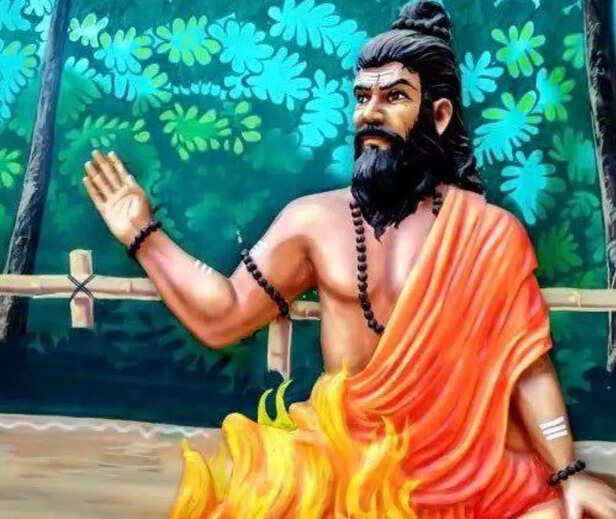
Durvasa, known for his unpredictable temper, is believed by many to be an incarnation of Shiva. His curses often led to great cosmic events, including the churning of the ocean (Samudra Manthan).
Despite his anger, he also blessed many with boons and spiritual guidance.
Durvasa teaches the delicate balance of power and discipline. His persona underscores the sacred role of tapas (austerity) and the potency of words.
Lord Shiva's forgotten avatars reveal his multifaceted role as destroyer, protector, teacher, and compassionate guide. Each form emerged in response to a unique cosmic or human need, reflecting the timeless principle that divine grace adapts itself to the situation of the seeker.
Whether as Piplaad easing planetary afflictions, Veerabhadra avenging injustice, or Kirat testing valor, Shiva's avatars show us the deeper truths behind existence, karma, and liberation. Rediscovering these hidden leelas not only enriches our understanding of Hindu mythology but also deepens our spiritual journey.
May the remembrance of these divine forms inspire us to seek Shiva not only in temples and stories but also in every test, transformation, and transcendence life offers.
1. Piplaad Avatar

The Healer of Shani Dosha
( Image credit : Timeslife )
The Piplaad Avatar of Lord Shiva was born to relieve the cosmic affliction caused by Shani (Saturn). According to ancient texts, Piplaad was born under a bad planetary alignment that indicated early death. However, he performed deep penance and invoked Shiva's grace, eventually gaining spiritual strength to confront Shani himself.
In a divine exchange, Piplaad forgave Shani but requested that those who worship him with devotion should be freed from Shani's malefic effects. This avatar is particularly venerated in parts of Maharashtra and Gujarat.
Piplaad represents the triumph of faith and penance over fate and planetary influences. He is also invoked in Vedic astrology rituals to reduce the impact of Shani dosha.
2. Veerabhadra

Avenger of Sati
( Image credit : Timeslife )
Veerabhadra is one of the most intense and destructive forms of Shiva, created from his third eye in a moment of cosmic rage. This form emerged when Goddess Sati immolated herself at her father Daksha's yajna, where Shiva had been insulted and uninvited. Veerabhadra descended upon the yajna with a ferocious army, destroying everything in his path and ultimately beheading Daksha.
Veerabhadra symbolizes righteous anger, divine justice, and the fiery energy required to destroy adharma (unrighteousness). He teaches that even divinity has a limit to tolerance when dharma is violated.
3. Sharabha

The Subduer of Narasimha
( Image credit : Timeslife )
After Lord Vishnu took the fierce form of Narasimha to kill the demon Hiranyakashipu, he became so wrathful that none could calm him. To restore cosmic balance, Shiva manifested as Sharabha, a half-lion and half-bird form even more powerful than Narasimha.
Sharabha enveloped Narasimha in a hug, calming him down and restoring order.
Sharabha teaches that even divine wrath must be regulated. It is a reminder that cosmic order requires cooperation and mutual restraint among the gods themselves.
4. Bhairava

Guardian of Time and Space
( Image credit : Timeslife )
Bhairava, particularly in his form as Kalabhairava, is a terrifying yet protective manifestation of Shiva. Born from Shiva's wrath when Brahma lied about reaching the top of the cosmic pillar of fire, Bhairava cut off one of Brahma's heads, thereby punishing ego and falsehood.
He later became the guardian of temples and sacred spaces, especially in Kashi.
Bhairava is the guardian of time (Kala) and teaches us to respect truth, humility, and the spiritual sanctity of space. He is invoked for protection from fear and negativity.
5. Grihapati

Cosmic Householder
( Image credit : Timeslife )
In this form, Shiva incarnated as Grihapati, born to a devout Brahmin couple. When Grihapati faced death due to planetary doshas, he undertook severe austerities and eventually invoked Shiva's power.
Shiva then appeared before him and blessed him, not only removing his doshas but also making him a symbol of household dharma and spiritual discipline.
Grihapati represents the harmonization of material duties and spiritual life. He shows that even householders can attain divine grace through sincere devotion.
6. Yatinath

The Test of Humility
( Image credit : Timeslife )
Once, a rich and pious merchant grew arrogant about his devotion. To test him, Shiva took the form of a humble ascetic named Yatinath and arrived at the merchant's home. The merchant insulted Yatinath and turned him away.
Shortly after, the merchant lost all his wealth. Realizing his mistake, he repented and was ultimately forgiven.
Yatinath reminds us that humility and compassion matter more than outer rituals. Divine tests often come in the most unexpected forms.
7. Aghora

The Lord of Transcendence
( Image credit : Timeslife )
Aghora is not just an avatar but one of the five fundamental faces (Panchamukhas) of Shiva. Associated with cremation grounds, intense austerity, and transcendence, Aghora represents dissolution of ego and complete surrender.
He is worshipped in Tantric and Aghori traditions as the embodiment of non-dual awareness that sees no distinction between pure and impure.
Aghora is the teacher of detachment, fearlessness, and spiritual transcendence. He encourages practitioners to go beyond societal norms to realize the truth.
8. Rishabh Avatar

The Sage Among Sages
( Image credit : Timeslife )
In the Rishabh Avatar, Shiva took the form of a sage to guide humanity on the path of vairagya (detachment) and dharma. He taught principles of simplicity, asceticism, and the inner path to liberation.
Some traditions even associate him with the Jain Tirthankara Rishabhdev, symbolizing Shiva's all-pervading guidance.
Rishabh represents the ultimate renunciate who shows that self-realization lies beyond material pursuits.
9. Kirat Avatar

The Warrior Hermit
( Image credit : Timeslife )
The Kirat Avatar is described in the Mahabharata, where Shiva takes the form of a wild hunter to test Arjuna. As Arjuna meditated to obtain divine weapons, Shiva in his Kirat form challenged him in battle.
After a fierce duel, Shiva revealed his identity and granted Arjuna the powerful Pashupatastra.
Kirat symbolizes divine testing before empowerment. It reminds us that inner strength, humility, and focus are prerequisites for receiving divine blessings.
10. Durvasa

Fiery Sage
( Image credit : Timeslife )
Durvasa, known for his unpredictable temper, is believed by many to be an incarnation of Shiva. His curses often led to great cosmic events, including the churning of the ocean (Samudra Manthan).
Despite his anger, he also blessed many with boons and spiritual guidance.
Durvasa teaches the delicate balance of power and discipline. His persona underscores the sacred role of tapas (austerity) and the potency of words.
Shiva's Avatars and the Infinite Faces of Divinity
Whether as Piplaad easing planetary afflictions, Veerabhadra avenging injustice, or Kirat testing valor, Shiva's avatars show us the deeper truths behind existence, karma, and liberation. Rediscovering these hidden leelas not only enriches our understanding of Hindu mythology but also deepens our spiritual journey.
May the remembrance of these divine forms inspire us to seek Shiva not only in temples and stories but also in every test, transformation, and transcendence life offers.
